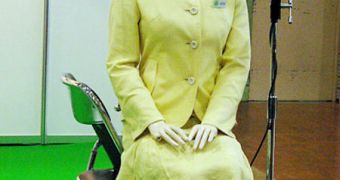The Japanese robot Saya, which was originally introduced to the world as a secretary, has tried to handle a classroom full of five- and six-graders earlier this year, triggering good laughter on its account. The kids have had a blast with the machine, whose eerie expressions and limited vocabulary they have found to be very amusing. Saya can now express only six basic emotions, and can just perform actions such as call roll, smile or scold, but plans for perfecting it already exist. Its makers say that the robot is not designed to replace human instructors in Japanese schools for now.
Under the skin of its face, Saya has a network of wires and electrical motors that can work together in various ways to express feelings such as surprise, fear, disgust, anger, happiness, or sadness. Depending on how many “muscles” act together, the machine's facial expression can smile to denote happiness, or frown to express sadness. Wires can be found in high numbers especially around the mouth and the eyes, in an attempt to mimic human expressions. For people, these areas are very relevant when trying to transmit a state of mind, even though not many realize it.
“Robots that look human tend to be a big hit with young children and the elderly. Children even start crying when they are scolded,” Saya's developer, Tokyo University of Science professor Hiroshi Kobayashi, told on Wednesday to The Associated Press. The machine can even synchronize its facial expression with preprogrammed phrases such as “Thank You.” Thus, it can say the words while tiny motors pull back on the corners of the lips, making it look like it's smiling.
However, despite all the technological advances, there are still those who do not feel very comfortable with this rapid progress. They maintain that individuals shouldn't avoid taking care of their own children and seniors by simply handing their care over to robots. “Simply turning our grandparents over to teams of robots abrogates our society's responsibility to each other, and encourages a loss of touch with reality for this already mentally and physically challenged population,” Georgia Institute of Technology professor Ronald C. Arkin shares.

 14 DAY TRIAL //
14 DAY TRIAL //